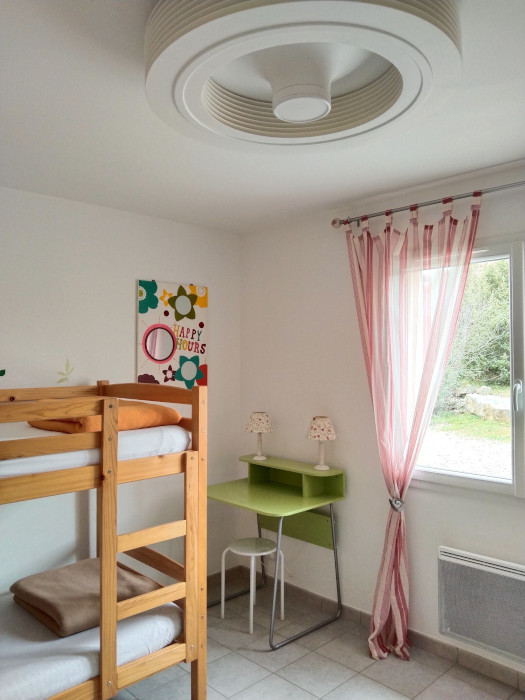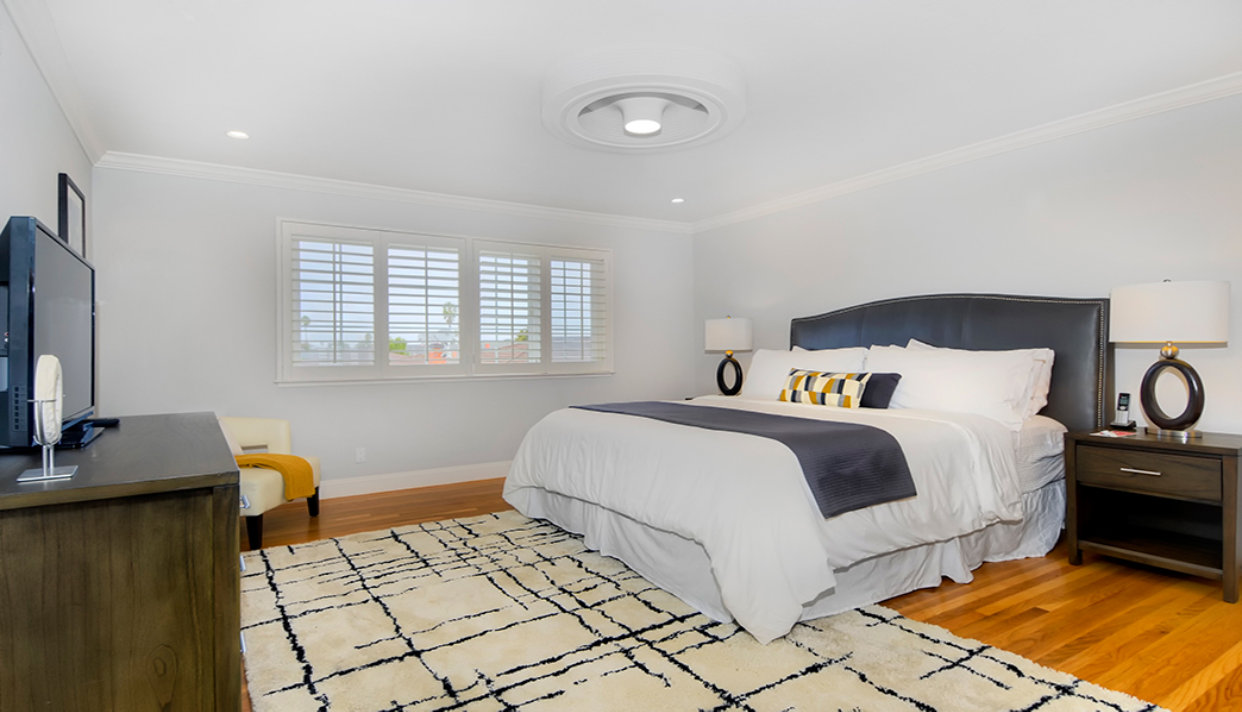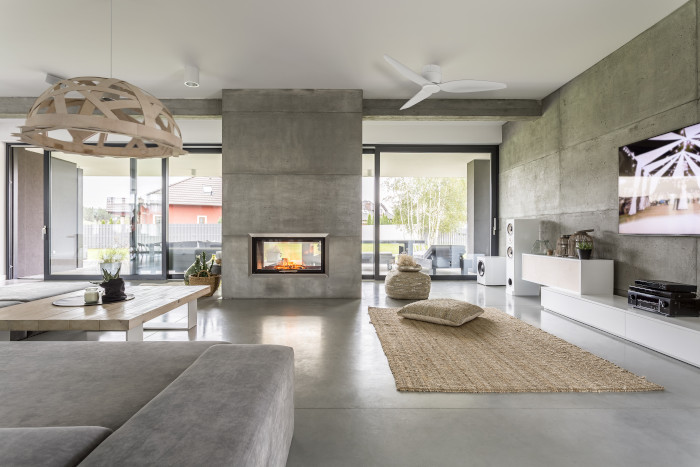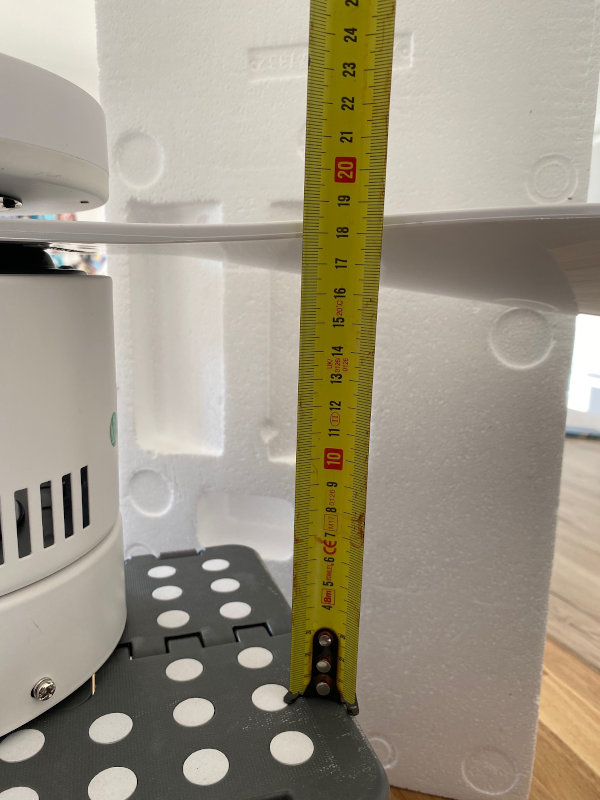Solutions for the residential sector
Individual houses for summer and winter comfort
With the arrival of the new RE2020 building standard, manufacturers of individual homes need to make houses less sensitive to future heatwaves. Ceiling fans are an easy-to-install, economical and high-performance solution for improving comfort in summer (and also in winter and between seasons).
SAS Brasseurs d’Air therefore offers individual homes builders (CMISTES) ceiling fans that meet safety standards (ceiling height & height under blades) and requirements in terms of energy consumption, product guarantees and other comfort issues.
Individual houses in summer comfort
Summer comfort issues for individual houses :
With the arrival of the RE2020, the regulatory framework for the thermal envelope of buildings has become stricter, particularly in zones H3 and H2D, where it is becoming difficult to comply with the RE2020 standard without a ceiling fan. Fans are a simple and effective solution for limiting discomfort in summer.
What’s more, even though they are not included in the RE2020, ceiling fans have a destratifying effect in winter during the off-season, helping to reduce heating and air-conditioning costs by improving their efficiency.
Simulations carried out in partnership with leading thermal engineering consultancies (see blog post ‘’ Individual houses and ceiling fans ‘’) have shown that the use of air movers represents the ideal passive solution for limiting the risk of summer thermal discomfort (350≤Degrees-hours≤1250), while being economical and easy to install.
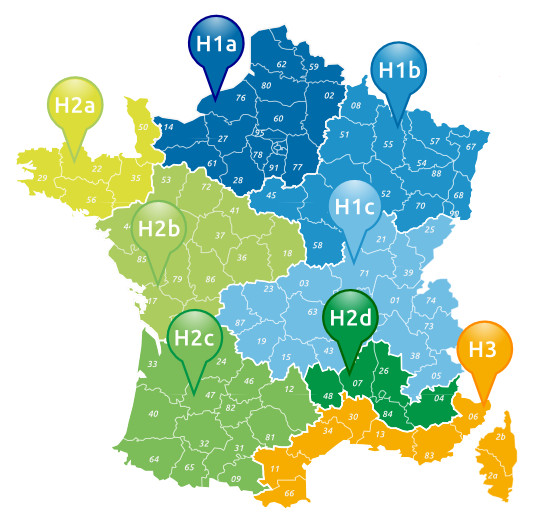
Exhale Fans Europe is pleased to support the HEXAOM group (Maisons France Confort, Maisons de Manon, etc.) in integrating the RE2020 to make homes ever more comfortable and safe.
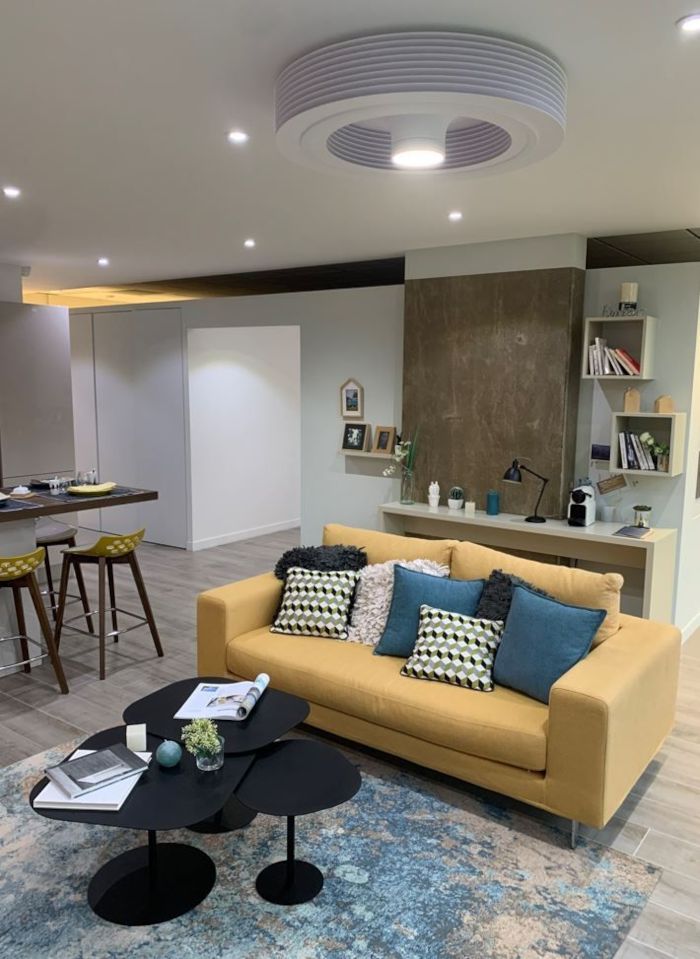
Our solution for CMISTS :
Our homebuilder customers (CMISTES) select the most suitable ceiling fans according to their objectives:
- Compliance with safety standards (2m30 under the blades of standard NF EN CEI 60335-2-80).
- Our ceiling fans are ultra-flat and are a solution for particularly low ceilings (2m47-2m48 real) that can sometimes occur in housing estate construction.
We work hand in hand with CMISTES and their design offices to define the ideal layout for optimising DH and Cep, while keeping budgets under control.
Our customers prefer Exhale and Samarat ceiling fans for the following reasons:
- The contribution of our ceiling fans in a well-designed building within the framework of the RE2020 is decisive in achieving the desired level of Degrees-Hours.
- Exhale fans such as Samarat (less than 20cm thick) address the safety issues associated with the height of the blades (2.30m between the ground and the blades / see blog article : RE2020 : What are the blade height rules? ) especially in children’s bedrooms with bunk beds (Exhale has no blades, which considerably reduces the risk of injury).
- The lifetime guarantee on the Samarat and Exhale (only on the structure) and the 5-year guarantee on everything else (motor, LED, remote control, etc.) show the seriousness and quality of these devices.
Sales and technical support, warehousing, logistics (per unit or in quantity) and after-sales service are handled by a French company, with available and responsive contacts.
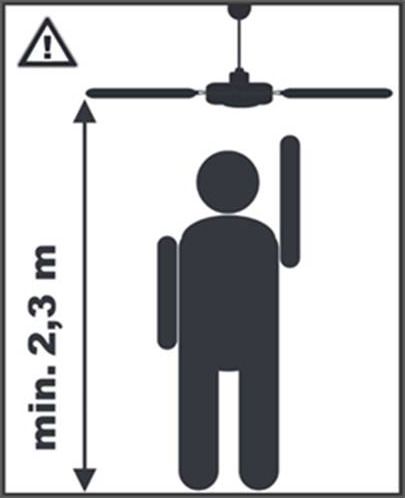
Standard EN IEC 60335-2-80 recommends a minimum height of 2.30m under the blades, which limits the height of the ceiling fan selected to 20cm for ceilings of 2.50m!
Our references in individual houses












Testimonial from Hexaom (Maison familiale, Maison Phénix):
“The Exhale and Samarat ceiling fans have provided a technical response to the problems associated with the RE2020, while remaining aesthetically pleasing and providing real ventilation comfort. The professionalism of its teams is also to be commended.”
Individual houses in winter comfort
The problem of winter comfort in individual houses :
In a heated space, heat rises to the top (up to 9°C difference between floor and ceiling). The ceiling fan distributes the heat evenly over the entire height of the room. The temperature becomes more pleasant. The intensity of the heating is reduced, with the same level of comfort.
Our solution for CMISTS :
During the heating season, the destratification provided by ceiling fans results in energy savings of up to 3% per metre of ceiling height.) Highly appreciated for its quiet operation, the Exhale vortex-effect blade-free ceiling fan distributes the air in all directions, evening out the temperature. It gives a feeling of well-being by preventing draughts.
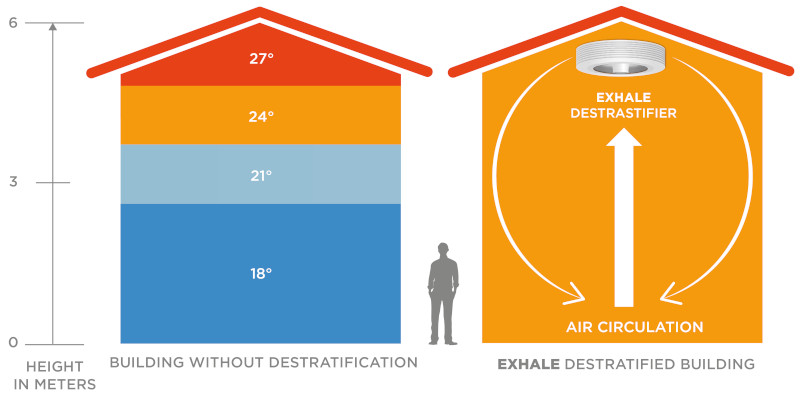
Thanks to its destratifying role, the Exhale ceiling fan (but also the Samarat by reversing its direction of rotation) saves energy thanks to a better distribution of heat in the room (balancing the temperature from floor to ceiling).
Although this winter comfort benefit is not included in the RE2020 regulations (which focus on summer comfort and DH), winter comfort remains a significant benefit for users of individual homes.
Blog posts
Reducing the cost of new individual homes in Mediterranean areas: what role can ceiling fans play?
Building at the right price, while complying with regulations and providing occupants with the best possible thermal comfort conditions, is always a difficult exercise.
Particularly on the Mediterranean coast and inland areas (Mediterranean zones H3 and H2d respectively), the RE2020 sets very ambitious targets that are not always easy to achieve.
Ceiling fans in new multi-family housing: how do they fit in with environmental labels?
At the heart of people’s lives, the construction industry is keen to promote the most exemplary projects. In the 1990s, labels for energy performance (BBC Effinergie, Passivhaus, Energiespong), low-carbon performance (Biosourcé, BBCA), biodiversity (Lucie, Biodivercity)… and environmental performance were introduced.
RE2020 for private home: work reserved for the customer, what points to watch out for?
The contract for the construction of a private home is governed by a special framework that protects consumers.
The price of the house to be built, as stated in the contract, must include the cost of the building, which is equal to the sum of the agreed price and, where applicable, the cost of any work that the client reserves the right to carry out…

